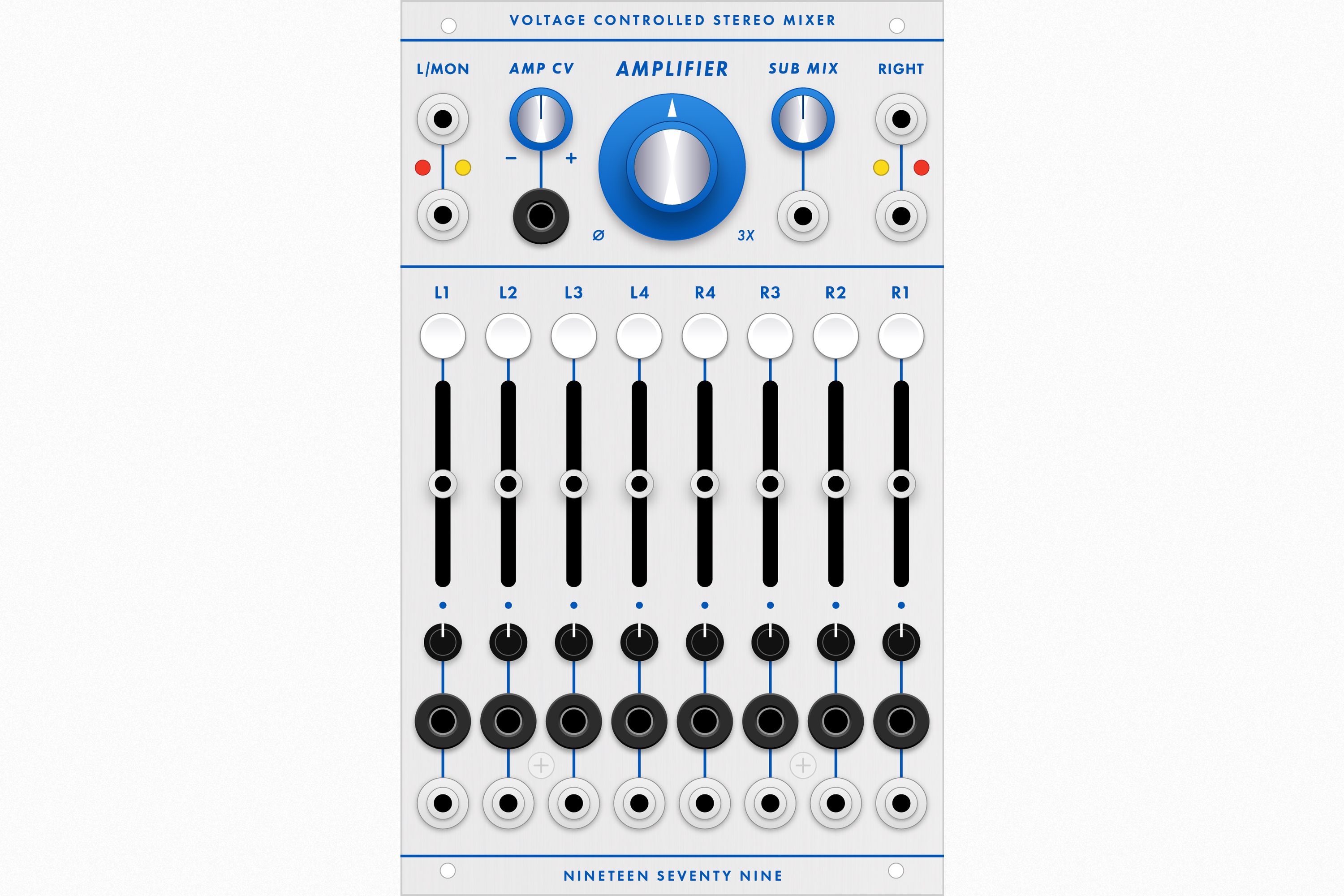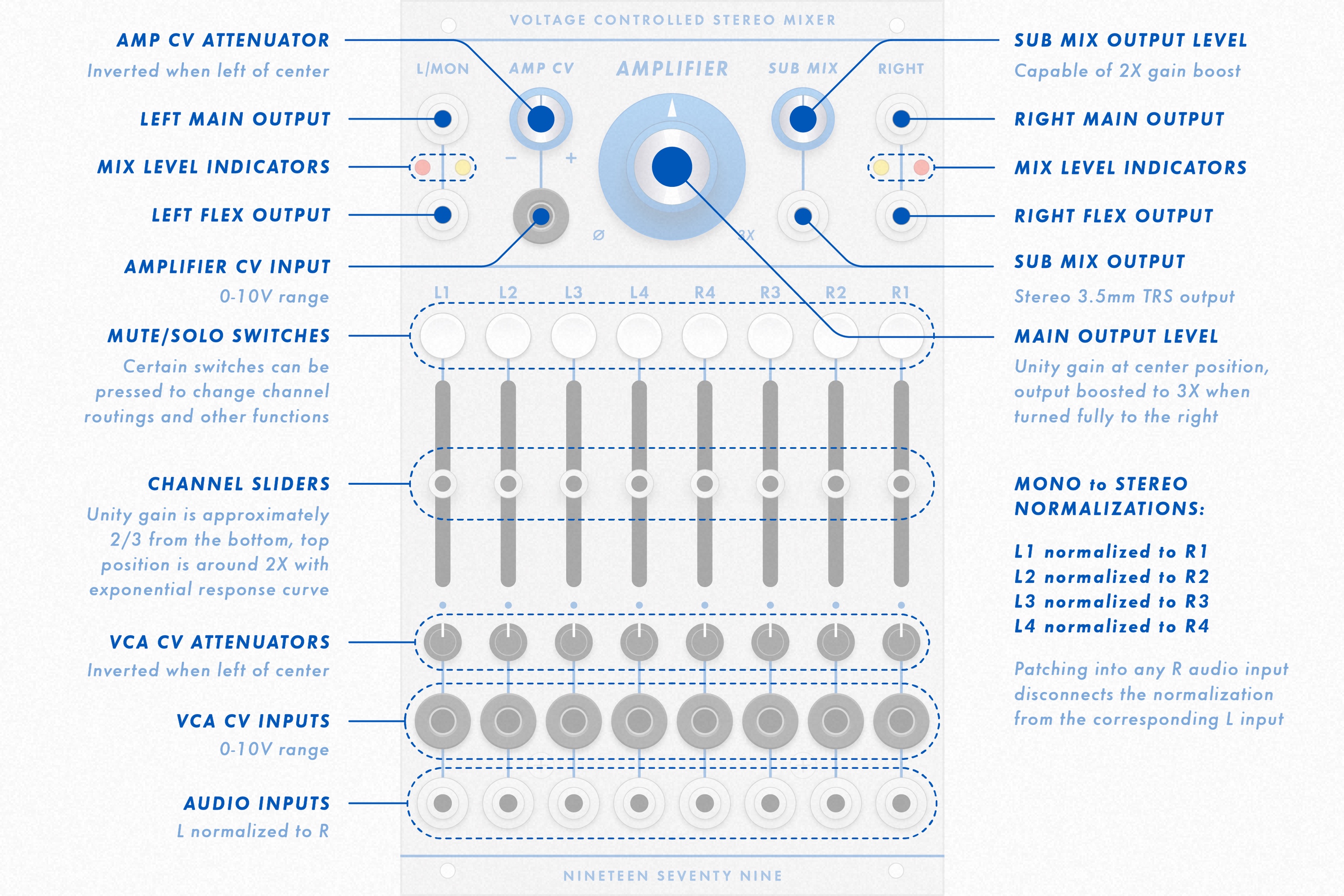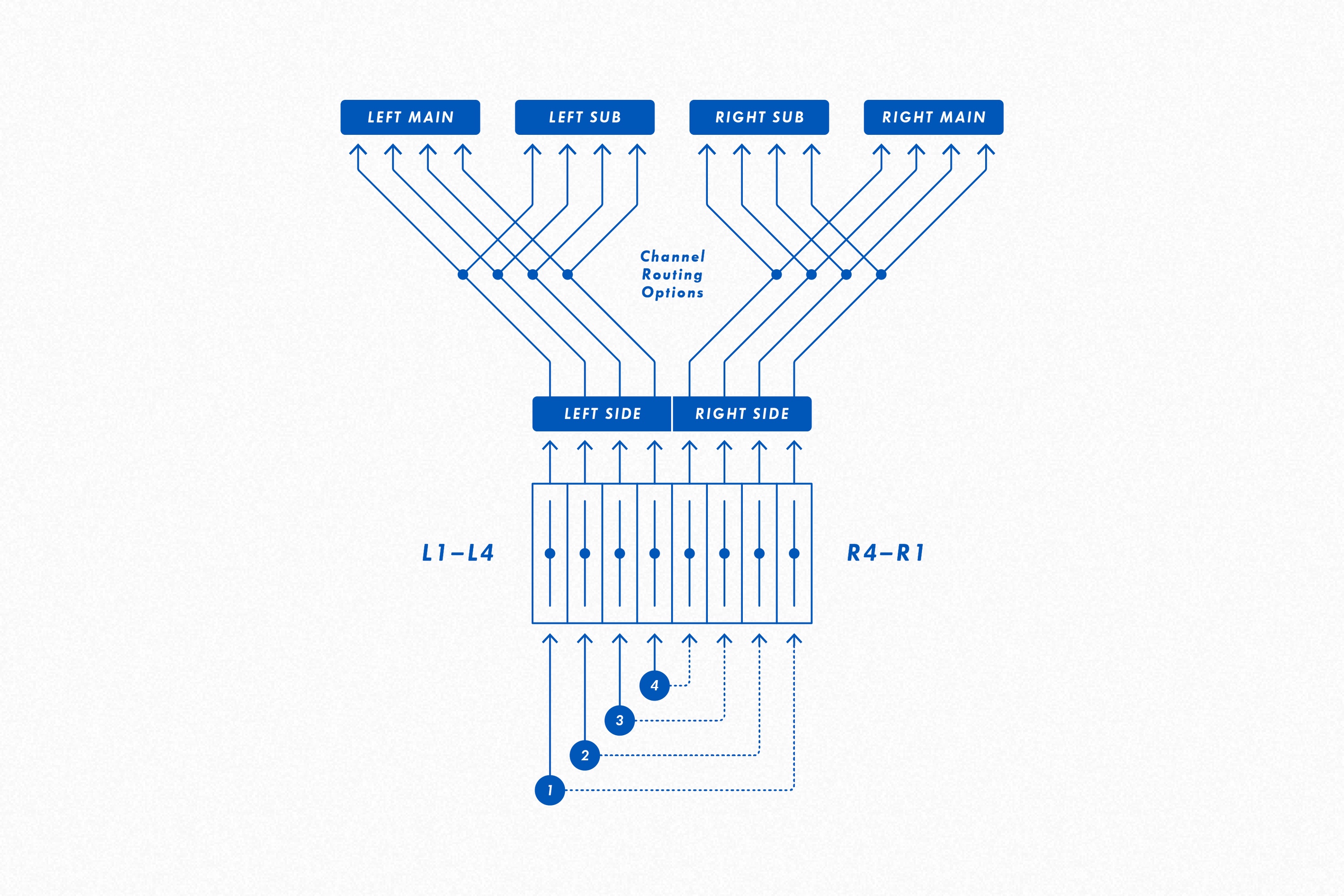Voltage Controlled Stereo Mixer
Preorders Open
Stereo audio mixer with flexible routing options
The VCSM is a successor to the DVCM, representing continued iteration of the modular mixing concepts pioneered by the Buchla 206 and 207 mixers.
The VCSM combines two 4:1 mono mixers into one stereo configuration, with a single master volume knob and a stereo submix output on a 3.5 mm jack, suitable for headphones or external recording devices.
The left (L1—L4) and right (R1—R4) channels on the lower section operate independently, with each grouping submixed to its respective Left and Right outputs. When used as a dual mono mixer, these uncorrelated outputs may be used without regard for stereo operation. However each of the L1—L4 inputs is also normalized to its corresponding R input (when unpatched). This places mono sound sources into a stereo field. Modulating the VCA levels of the normalized channels creates stereo panning effects. Unlike mixers which simply pan a mono signal across the stereo field using "pan pots," the unique configuration of the VCSM allows the left and right sides to be modulated independently.
All 8 input channels have a bipolar CV attenuator which can be used to modify both the amplitude and polarity of external modulation sources, which is the key to stereo panning and more specialized applications such as sidechaining. Each channel also has its own LED switch. In normal operation these switches function as clickless mute switches. The switches can also be used to assign multiple channels to a single group, where one slider can be used to control the volume of others in the group (such as its alternating stereo twin). Channels may also be arbitrarily assigned to the MAIN mix, SUB mix, or both. These routing options can be used to create submixes, route certain channels to external recording devices or effects processors, or monitor certain elements of the mix on headphones separately from the other signals.
The top section includes the Mix Level knob with its associated CV input and inverting attenuator. The Mix Level knob can provide a significant gain boost to the outputs, which may be useful when interfacing with external devices such as Eurorack modular systems. The top and bottom pairs of stereo outputs provide different mix bus options, based on the chosen channel routings. The MAIN mix, with its volume controlled by the Mix Level knob, is always accessible from the top outputs. The bottom Left and Right outputs can also be configured to provide one of four options: MAIN mix (pre or post-fader, controlled by the Mix Level knob) or SUB mix (pre or post-fader, controlled by the SUB Mix knob). These routing options can be used to create core mixer functions such as direct outputs, house mixes, and effects sends. The SUB mix knob controls the level of a 3.5mm stereo jack which can be used with headphones or external recording devices. When the lower pair of outputs is configured to provide the post-fader SUB mix, the SUB mix knob also controls the level of these outputs.
Core Features
- Flexible mono (8:1), dual mono (4:1), or stereo (8:2) audio mixer
- Clickless mute per channel with LED status indicator
- Configurable per channel routing to MAIN and/or SUB mix buses
- Line level SUB mix output on 3.5mm stereo headphone jack
- Output gain boost for compatibility with external devices
- Voltage control of all channels with inverting attenuators
- Persistence of all user settings across power cycles
- Compatible with Buchla power supply and voltage standards



